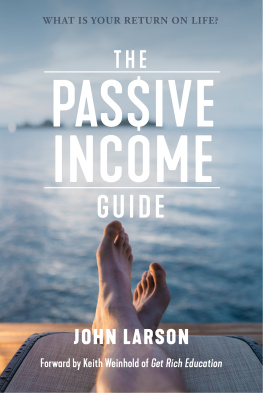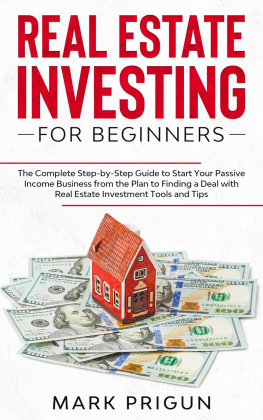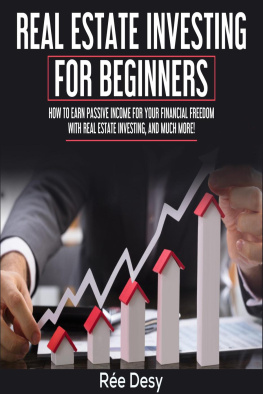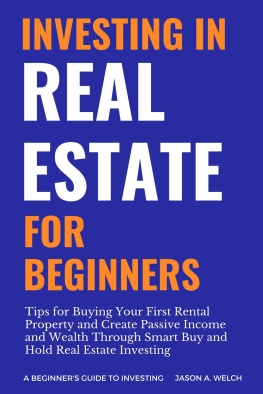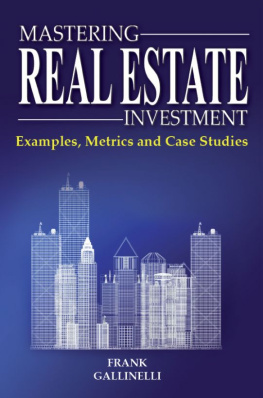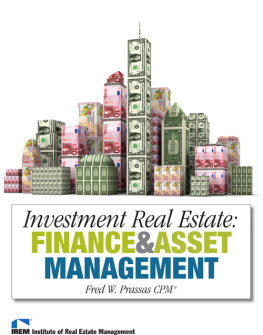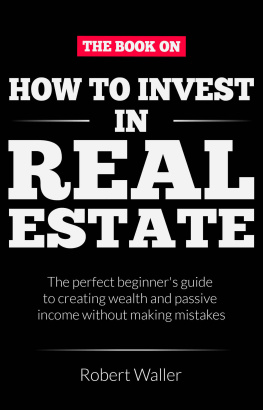Thank you for downloading this AMACOM eBook.
Sign up for our newsletter, AMACOM BookAlert , and
receive special offers, access to free samples, and
info on the latest new releases from AMACOM,
the book publishing division of
American Management Association.
To sign up, visit our website: www.amacombooks.org
To learn more about the American Management
Association visit: www.amanet.org

The copyright information for this title may be found at the end of this eBook file.
THE
REAL ESTATE INVESTORS POCKET CALCULATOR
SECOND EDITION
THE
Real Estate Investors
Pocket Calculator

Simple Ways to Compute Cash Flow, Value, Return, and Other Key Financial Measurements
MICHAEL C. THOMSETT

Contents
by Michael C. Thomsett
INTRODUCTION TO THE SECOND EDITION
Beyond the Basic Calculation
The entire real estate market has undergone dramatic changes in the decade since publication of this books first edition. During that period and before the real estate troubles of 200809, investors were assured that property values had always risen and would continue to do so into the indefinite future. Although the market adjustment was brief, it was disturbing for investors and homeowners alike. The market has not been destroyed, however, and today it is coming back stronger than ever.
One thing that did not change is the need for investors to gain mastery over the math of real estate, in finance, valuations, and cash flow. All of these quantify risk in its many forms. This books formulas are as valid today as they were in the past. However, all the formulas have been expanded to include Excel worksheet programs. This adds great value to the material.
The astute real estate investor has to perform as a risk analyst for purposes of investment value, profits, andmore than anything elsecash flow. The very question of whether a particular investment is feasible relies on your understanding of how to calculate the components of value and risk.
The range of financial topics that are involved in finding, buying, and managing real estate investments is significant. This book breaks down the daunting range of tasks into a series of focused chapters, explains how the important measurements of value and feasibility are made, and explains how you then apply the information to smart decision making.
The study of real estate involves a broad range of topics, including the very basic concept of how real estate value is arrived at, how it changes, and what discusses the lease option, a creative alternative to buying outright.
Most real estate investors need to rent out their properties to cover their debt service, so , you will find a good summary of how land and building measurements are done.
The book also has a series of useful appendixes. The first one, provide amortization and remaining balance tables. The book concludes with a detailed glossary.
This book provides you with a full range of financial calculation tools and demonstrates how they can be used to help you maintain control over your real estate investments. While many consider this topic to be complex, the material makes it all quite clear. Through the use of examples, definitions, worksheets, and tables, the explanations are made as visual as possible so that the information is far more than a series of explanations; it is intended to help you make decisions based on accurate facts. Too many individuals begin investment programs without truly understanding the risks involved and, of greater concern, without knowing what questions to ask before committing capital. In this book, you will not only see how specific calculations are done but also find examples to demonstrate why those calculations are so essential.

CHAPTER 1
VALUATION OF PROPERTY
The Starting Point
Real estate is different than all other forms of investing in several ways: tax benefits, generation of income to pay for mortgages, and more than anything else, the fact that cash flow is more crucial than profits. While this point was made in the first edition of this book a decade ago, it is as true today as ever. In 2008 and 2009, it looked like real estate was done as a viable investment, but this has been predicted many times in the past. The predictions were always wrong.
Today, real estate looks better than ever for investors. Home ownership rates are way down, but rental rates are significantly higher than in the past. For investors, this means that investment property is today more popular than ever before, based on cash flow as well as profit potential. The true meaning of value in real estate begins with profitability, but ultimately it is determined by cash flow.
All investments are judged on the basis of their current and future market value. In the case of real estate, the historical rise in the market value of properties has been consistent and has served as the base for many long-term financial plans. Many people, whether they are investing only in their own homes or expanding into a portfolio of rental properties, have discovered the potential for profits through real estate.
All forms of investing should be based on study and analysis. Real estate properties vary greatly in cost as well as in quality, location, and income potential. A smart place to begin the search for real estate investments is to identify some of the common myths about this market. These myths include the following:
1.Real estate values always go up. Markets always move in cycles. Therefore, every market, including the real estate market, will exhibit periods of strong growth and periods of stagnation and even declines in market values. While these cyclical changes may be temporary, they are part of the investing process.
2.Profit over the long term is the most important criterion. While profits are important to all investors, most people who put their money in real estate cover the majority of the purchase price through financing. Because investors have to generate enough rental income to cover their mortgage payments (along with property taxes, insurance, utilities, and repairs), profits are only one of the measures by which the value of an investment is judged. Of far more immediate concern is the cash flow that you can gain from that investment. As long as rents are high enough to cover all of your expenses and payments, cash flow is positive. But if rents stop or arent high enough to provide that coverage, your investment plan could be in trouble. This is where careful planning and analysis of risks is so important.
3.Tax benefits are so good that its always smart to carry a mortgage. A common belief is that a mortgage, even one with a high interest rate, is beneficial as long as rental income is higher than the mortgage payments. The argument may be made that interest on the mortgage payment is deductible as an investment expense, so it does not make sense to pay down that mortgage or to get a lower balance initially. This is false. It is always better to reduce your payments and expenses; you will always end up with a stronger cash position with a smaller mortgage and lower payments.
Next page


